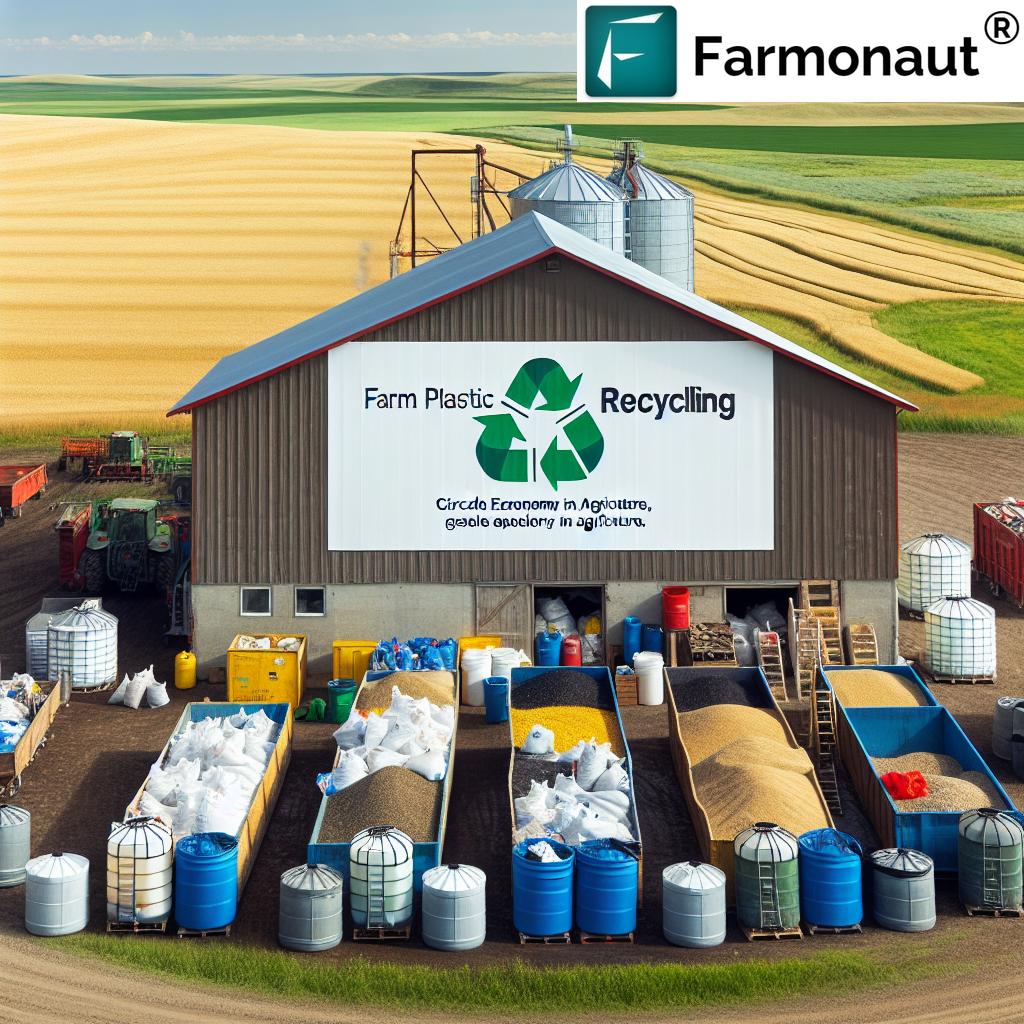Unlocking Alberta’s Pulse Potential: Sustainable Farming Trends and Crop Rotation Strategies for 2023
“Alberta’s pulse crops can reduce fertilizer costs by up to 30% and agricultural emissions by 15-20% through nitrogen fixation.”
Welcome to our comprehensive exploration of pulse crops in Alberta and their pivotal role in sustainable agriculture and crop rotation strategies. As we delve into the challenges and opportunities facing pulse production in 2023, we’ll uncover why these nutritious legumes are both a boon for farmers and a potential game-changer for environmental sustainability in agriculture.
The Pulse of Alberta’s Agriculture
Alberta’s agricultural landscape is vast and diverse, with crops spanning from the golden fields of wheat and canola to the verdant pastures supporting livestock. However, amidst this agricultural tapestry, pulse crops – including peas, lentils, and beans – are emerging as unsung heroes with the potential to revolutionize farming practices.
Pulses offer a multitude of benefits, from improving soil health through nitrogen fixation to reducing the need for synthetic fertilizers. Yet, despite these advantages, pulse crops face an uphill battle in gaining widespread adoption among Alberta’s farmers. In this blog post, we’ll explore the reasons behind this paradox and examine the latest trends shaping the future of pulse production in the province.

The Power of Pulses: Understanding the Benefits
Before we dive into the challenges, let’s first appreciate the remarkable attributes that make pulse crops so valuable for sustainable agriculture:
- Nitrogen Fixation: Pulses have the unique ability to convert atmospheric nitrogen into a form that plants can use, reducing the need for nitrogen fertilizers.
- Soil Health Enhancement: The deep root systems of pulse crops improve soil structure and increase organic matter content.
- Water Efficiency: Many pulse varieties are drought-tolerant, making them ideal for Alberta’s variable climate.
- Crop Rotation Benefits: Incorporating pulses into rotation breaks disease cycles and improves yields of subsequent crops.
- Reduced Environmental Impact: By lowering the need for synthetic fertilizers, pulses help decrease nitrous oxide emissions, a potent greenhouse gas.
These benefits align perfectly with the growing need for sustainable agriculture practices and the push to reduce the carbon footprint of farming operations. However, the road to widespread pulse adoption is not without its obstacles.
Challenges Facing Pulse Crop Adoption in Alberta
Despite the clear advantages, several factors contribute to the hesitancy among Alberta farmers to fully embrace pulse crops:
- Disease Management: Pulses can be susceptible to various diseases, requiring careful management and crop rotation planning.
- Market Volatility: Fluctuating global demand, particularly from major importers like India, can create uncertainty for growers.
- Knowledge Gap: Many farmers lack experience with pulse crops and may be unsure about best practices for cultivation.
- Infrastructure Limitations: Processing and handling facilities for pulses may be less developed compared to traditional crops.
- Weather Risks: Alberta’s climate can pose challenges, with late spring frosts or early fall freezes affecting pulse crop yields.
Addressing these challenges is crucial for increasing pulse acreage and realizing the full potential of these crops in Alberta’s agricultural system.
Innovative Solutions and Research Initiatives
To overcome the hurdles facing pulse crop adoption, various stakeholders in Alberta are spearheading research and development efforts:
- Breeding Programs: Scientists are developing new pulse varieties with improved disease resistance and adaptability to Alberta’s climate.
- Agronomic Research: Studies are underway to optimize planting dates, seeding rates, and fertilizer management for pulse crops in different regions of Alberta.
- Market Development: Efforts to expand domestic and international markets for Alberta pulses are ongoing, aiming to stabilize demand and prices.
- Extension Services: Knowledge transfer programs are being enhanced to educate farmers on best practices for pulse crop production.
These initiatives are crucial for building a strong foundation for pulse crop expansion in Alberta. However, success also relies on farmers having access to cutting-edge tools and technologies to support their decision-making processes.
This is where innovative agritech solutions like Farmonaut come into play. Farmonaut’s satellite-based farm management platform offers real-time crop health monitoring, AI-driven advisory systems, and resource management tools that can be invaluable for pulse crop producers. By leveraging these technologies, farmers can make data-driven decisions to optimize their pulse crop production and mitigate risks associated with weather and disease pressures.
The Role of Pulses in Sustainable Crop Rotation Strategies
Crop rotation is a cornerstone of sustainable agriculture, and pulses play a vital role in enhancing the effectiveness of these strategies. Let’s explore how incorporating pulses into rotation plans can benefit Alberta farmers:
- Breaking Disease Cycles: Alternating pulses with cereals or oilseeds helps interrupt pest and disease lifecycles, reducing the need for chemical interventions.
- Improving Soil Structure: The deep root systems of pulse crops help break up compacted soil layers, improving water infiltration and root growth for subsequent crops.
- Enhancing Nutrient Availability: Pulses leave residual nitrogen in the soil, benefiting the following crop and potentially reducing fertilizer requirements.
- Diversifying Income Streams: Including pulses in rotation can help farmers spread market risks and capitalize on different commodity price cycles.
By integrating pulses into their crop rotations, Alberta farmers can create more resilient and sustainable farming systems that are better equipped to handle environmental stresses and market fluctuations.
Market Outlook for Alberta Pulses in 2023
Understanding the market dynamics is crucial for farmers considering expanding their pulse acreage. Here’s a snapshot of the pulse market outlook for Alberta in 2023:
- Global Demand: Despite fluctuations, the overall trend for pulse demand remains positive, driven by growing interest in plant-based proteins and sustainable food sources.
- Price Trends: While prices can be volatile, many analysts predict stable to slightly increasing prices for major pulse crops in 2023.
- Export Opportunities: Alberta’s reputation for high-quality pulses continues to open doors in international markets, particularly in Asia and the Middle East.
- Value-Added Processing: Emerging opportunities in pulse processing for food ingredients and plant-based products are creating new avenues for Alberta’s pulse industry.
Farmers looking to capitalize on these market trends can benefit from tools that provide real-time market insights and help optimize their production strategies. Farmonaut’s platform includes features that can assist in this regard, offering data-driven insights to inform planting and marketing decisions.
Environmental Impact: Pulses and Agricultural Emissions
One of the most compelling arguments for increasing pulse production in Alberta is the potential for significant reductions in agricultural emissions. Let’s break down how pulses contribute to this important goal:
- Reduced Nitrous Oxide Emissions: By fixing nitrogen naturally, pulses decrease the need for synthetic nitrogen fertilizers, which are a major source of nitrous oxide emissions.
- Carbon Sequestration: Pulse crops have the ability to sequester carbon in the soil, contributing to overall carbon dioxide reduction in the atmosphere.
- Lower Energy Use: The reduced requirement for fertilizer production and application translates to lower energy consumption and associated emissions.
- Improved Soil Health: Healthier soils resulting from pulse rotations are more resilient and better able to withstand climate stresses, reducing the need for intensive interventions that could increase emissions.
By incorporating pulses into their crop rotations, Alberta farmers can play a significant role in meeting provincial and national targets for reducing agricultural emissions. This aligns with broader sustainability goals and can potentially open up new revenue streams through carbon credit programs.
“Despite benefits, pulse crops occupy less than 10% of Alberta’s cropland, with efforts underway to increase acreage by 25% by 2025.”
Innovative Farming Practices for Pulse Production
To maximize the benefits of pulse crops and overcome production challenges, Alberta farmers are adopting innovative practices. Here are some cutting-edge approaches gaining traction:
- Precision Agriculture: Using GPS-guided equipment and variable rate technology to optimize seeding and input application for pulse crops.
- Cover Cropping: Integrating pulse cover crops to improve soil health and provide additional nitrogen fixation between main crop seasons.
- Intercropping: Growing pulses alongside other crops to maximize land use efficiency and create symbiotic growing environments.
- Biological Inputs: Utilizing microbial inoculants and biostimulants to enhance nitrogen fixation and improve plant resilience.
- Conservation Tillage: Implementing reduced or no-till systems to preserve soil structure and organic matter, which is particularly beneficial for pulse crops.
These innovative practices are not only improving pulse crop yields but also enhancing overall farm sustainability. Farmonaut’s satellite-based monitoring can provide valuable insights into the effectiveness of these practices, allowing farmers to fine-tune their approaches for optimal results.
Pulse Crop Comparison: Making Informed Choices
To help Alberta farmers make informed decisions about which pulse crops to incorporate into their rotations, we’ve compiled a comprehensive comparison table:
| Pulse Crop Type | Nitrogen Fixation Potential (kg N/ha) | Water Use Efficiency (mm/tonne yield) | Disease Resistance | Market Demand Trend | Contribution to Soil Health | Estimated Reduction in Fertilizer Costs (%) | Potential for Reducing Agricultural Emissions |
|---|---|---|---|---|---|---|---|
| Field Peas | 50-80 | 180-200 | Medium | Stable | High | 20-30 | High |
| Lentils | 30-60 | 150-170 | Medium | Increasing | Medium | 15-25 | Medium |
| Dry Beans | 40-70 | 200-220 | Low | Stable | Medium | 10-20 | Medium |
| Faba Beans | 70-100 | 160-180 | High | Increasing | High | 25-35 | High |
| Chickpeas | 20-50 | 230-250 | Low | Increasing | Low | 5-15 | Low |
This table provides a snapshot of the various pulse crops suitable for Alberta’s climate, allowing farmers to compare key factors such as nitrogen fixation potential, water use efficiency, and market trends. By considering these factors alongside their specific farm conditions and goals, producers can make more informed decisions about which pulse crops to integrate into their rotations.
The Future of Pulse Crops in Alberta
As we look towards the future, the potential for pulse crops in Alberta’s agricultural landscape is immense. Here are some key trends and developments that are likely to shape the industry:
- Climate-Resilient Varieties: Ongoing research is focused on developing pulse varieties that can better withstand Alberta’s variable climate conditions, including drought and frost tolerance.
- Expanded Processing Capabilities: Investments in local processing facilities are expected to increase, providing more value-added opportunities for Alberta’s pulse crops.
- Precision Agriculture Integration: Advanced technologies, including Farmonaut’s satellite-based monitoring, will play an increasingly important role in optimizing pulse crop production and management.
- Policy Support: Government initiatives aimed at promoting sustainable agriculture are likely to provide additional incentives for pulse crop adoption.
- Consumer Demand: Growing interest in plant-based proteins and sustainable food sources is expected to drive increased demand for pulse crops both domestically and internationally.
These developments point to a promising future for pulse crops in Alberta, with potential for significant growth in acreage and economic importance.
Leveraging Technology for Pulse Crop Success
In the rapidly evolving landscape of agriculture, technology plays a crucial role in maximizing the potential of pulse crops. Farmonaut’s suite of tools offers several advantages for pulse crop producers:
- Real-Time Crop Monitoring: Satellite-based vegetation health indices allow farmers to track pulse crop development throughout the growing season, enabling early detection of issues such as disease or nutrient deficiencies.
- AI-Powered Advisories: Farmonaut’s Jeevn AI system provides personalized recommendations for pulse crop management, taking into account local conditions and historical data.
- Resource Optimization: Tools for managing water resources and tracking carbon footprints help farmers make more sustainable decisions in pulse crop production.
- Market Insights: Access to up-to-date market data and trends can assist farmers in making informed decisions about which pulse crops to grow and when to sell.
By integrating these technological solutions into their operations, Alberta farmers can enhance the efficiency and profitability of their pulse crop production while contributing to more sustainable agricultural practices.
For developers and agribusinesses looking to integrate advanced agricultural data into their own systems, Farmonaut offers a comprehensive API solution. Detailed documentation for the API can be found in the API Developer Docs.
Conclusion: Embracing the Pulse Revolution
As we’ve explored throughout this blog post, pulse crops offer a wealth of benefits for Alberta’s agricultural sector, from improving soil health and reducing environmental impact to diversifying farm income and meeting growing global demand for sustainable protein sources. While challenges remain, the combination of innovative farming practices, ongoing research, and cutting-edge technologies like those offered by Farmonaut are paving the way for a bright future for pulse crops in the province.
By embracing pulse crops and integrating them into sustainable crop rotation strategies, Alberta farmers can position themselves at the forefront of agricultural innovation, contributing to both economic prosperity and environmental stewardship. As we move forward, the pulse industry in Alberta stands poised for growth, ready to unlock its full potential and play a vital role in shaping the future of sustainable agriculture.
FAQ Section
Q: What are the main pulse crops grown in Alberta?
A: The main pulse crops grown in Alberta include field peas, lentils, dry beans, faba beans, and chickpeas.
Q: How do pulse crops contribute to sustainable agriculture?
A: Pulse crops contribute to sustainable agriculture by fixing nitrogen in the soil, reducing the need for synthetic fertilizers, improving soil health, and lowering agricultural emissions.
Q: What are the main challenges facing pulse crop adoption in Alberta?
A: The main challenges include disease management, market volatility, knowledge gaps among farmers, infrastructure limitations, and weather risks.
Q: How can technology help in pulse crop production?
A: Technology like Farmonaut’s platform can assist in real-time crop monitoring, provide AI-powered advisories, help optimize resource use, and offer market insights to improve decision-making in pulse crop production.
Q: What is the future outlook for pulse crops in Alberta?
A: The future outlook is positive, with expected growth in acreage, development of climate-resilient varieties, expanded processing capabilities, and increased demand driven by consumer interest in plant-based proteins and sustainable food sources.




















